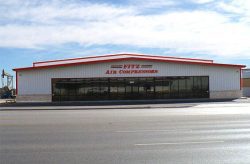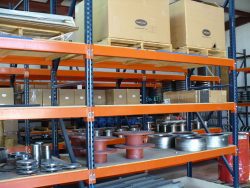Clutch vs Torque Converter
If you work with heavy equipment in the industrial setting, two phrases you’re likely to have come across are “clutch” and “torque converter.” In this article, we will discuss their differences.
Clutch vs. Torque Converter: Basic Definitions
In heavy equipment used in industrial applications, such as forklifts, tractors and haulers, a transmission moves the force of the engine to the wheels, similar to how transmissions work in cars. Both clutches and torque converters deliver power from the transmission to keep engines from stalling. Their main differences lie in how they work and what they’re used for.
While clutches link the engine to the transmission, torque converters allow them to run independently from each other. Clutches operate via centrifugal force, while torque converters run on hydraulic power.
To learn more about the unique roles of clutches and torque converters in your heavy machinery, read on. For specific inquiries or assistance with your industrial torque converters, visit our Contact Us page or call us directly at 888-220-3489.
What Is a Clutch?
A basic transmission, such as one found in a car, has two rotating shafts: One driven by the engine (the driving shaft) and the driven shaft.
The clutch allows the two shafts to remain connected and spin, and it also allows the shafts to be uncoupled and run at different speeds. In turn, this allows an engine to keep running even if the vehicle is not in motion, such as if it’s idling or the driver hits the brakes.
A centrifugal clutch is a common type of clutch used in vehicles and machines. As its name implies, it links the driving shaft to the driven shaft using centrifugal force. It can be placed between the transition and the flywheel of the engine.
When you start the engine, it creates centrifugal force depending on the speed inputs it receives. For example, higher speed inputs result in more centrifugal force–enough for the clutch to engage and link the driving and driven shafts. Conversely, slower speeds allow the clutch to disengage and the two shafts to separate.
As its name implies, a centrifugal clutch uses centrifugal force to form a connection between the driver and driven shafts or to engage other clutches.
What Is a Torque Converter?
Torque converters are a newer solution to the problem of keeping the engine running while another connected device, such as the wheels, is not moving. They can be found in newer heavy equipment as well as in power transmissions in devices used across industries.
Before we go into what a torque converter is, it’s important to first understand what torque is. In simple terms, torque is the measure of force acting on an object to make it rotate on an axis.
Fluid is used to transfer rotational power from the engine or driver to the driven machine, usually the transmission, without any mechanical contact. This means the driver and the driven members can run independently of each other: The former can run faster than the latter, and vice versa.
Clutch vs. Torque Converter: Parts
A clutch has many components, but the main ones include the following:
Driving Members
A clutch system has two driving members: the flywheel and the pressure plate.
The flywheel is a heavy wheel that delivers power to the driven member. It also stores excess rotational energy for intermittent use. Meanwhile, the pressure plate applies force to engage the clutch.
The flywheel and the pressure plate are forced together by way of a pressure spring. Between them, they grip the driven member.
Driven Member
The clutch disc is fastened to a shaft connected to a transmission via a series of splines. It can move lengthwise on the shaft, and it fits into its grooves so that the clutch disc and the shaft can rotate simultaneously. Some vehicles, like heavy trucks, have two clutch discs.
Operating Member
This includes components needed to correctly operate the clutch, such as a foot pedal as well as spring and release levers.
Meanwhile, a torque converter has three major components:
Impeller
Resembling a fan with curved and tilted blades, an impeller rotates with the speed of the engine. The centrifugal force created by the spinning flings the fluid outward through the impeller’s blades and through the blades of the turbine.
Turbine
Like the impeller, the turbine has angled blades. When fluid from the impeller hits these blades, they rotate, turning the shaft and pump in the vehicle.
Stator
Located in the middle of the torque converter, the stator changes the direction of the fluid, thus multiplying the torque. It also keeps the fluid from hitting the housing of the torque converter. The stator has a one-way clutch that prevents it from turning in more than one direction.
Clutch vs. Torque Converter: Applications
Clutches are used in industrial and commercial applications like mining and manufacturing. They can also be found in vehicles with manual transmissions, lawnmowers, chippers, go-karts and sawmills.
Torque converters are used in automatic transmissions of cars, buses and trucks as well as heavy-duty vehicles like forwarders. They can be found in industrial settings, such as in forklifts, conveyor belts, construction equipment, drill rigs and winches.
To summarize, clutches are best for high-speed applications, while torque converters are ideal for applications that involve heavy loads.
Clutch vs. Torque Converter: Pros and Cons
Clutch Pros
- A centrifugal clutch is simple to operate. It’s also easy to control the engagement speed.
- Clutches cost less than torque converters.
- It’s cheaper to service and repair clutches.
Clutch Cons
- Clutches are not suitable for all industrial applications. In fact, most modern heavy machinery, such as forklifts, no longer use just clutches.
- Abruptly starting the engine or overloading it can damage it. If you’re using a clutch, it’s best to engage it gradually for smooth acceleration.
- Slippage limits the transmission power of a clutch. Using it with an engine with a low RPM can increase the risk of overheating and severely damaging the clutch.
Torque Converter Pros
- Unlike clutches, torque converters do not need human action to be operated.
- Torque converters deliver quieter, smoother performance.
- You can bring the vehicle or machine to a halt without stalling the engine.
- A torque converter increases the engine’s torque.
- Because it uses a fluid coupling, there is less friction, reducing wear on transmission components.
Torque Convert Cons
- Maintenance and repair can be costly and must be budgeted for.
- Fluid needs to be replaced from time to time.
Your Source for Industrial Equipment and Services
As leaders in industrial equipment servicing, we understand the critical role that components like clutches and torque converters play in maintaining the efficiency and reliability of your heavy machinery. At Fitz Equipment, we specialize in providing top-notch maintenance and replacement services that ensure your equipment operates at peak performance. For personalized advice or to schedule a service, visit our Contact Us page or reach out to our experts at 888-220-3489. Trust us to keep your operations running smoothly with our reliable solutions.




